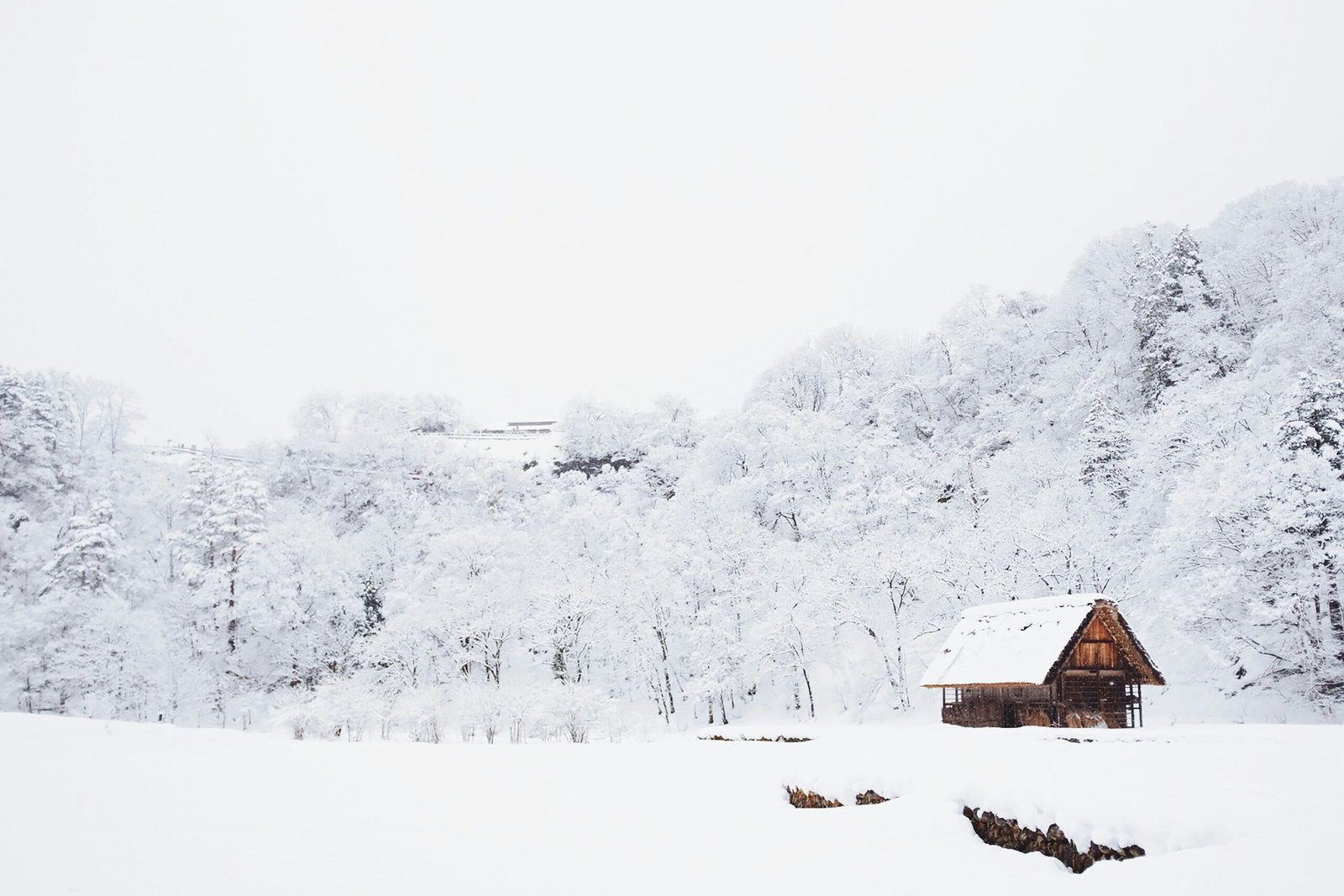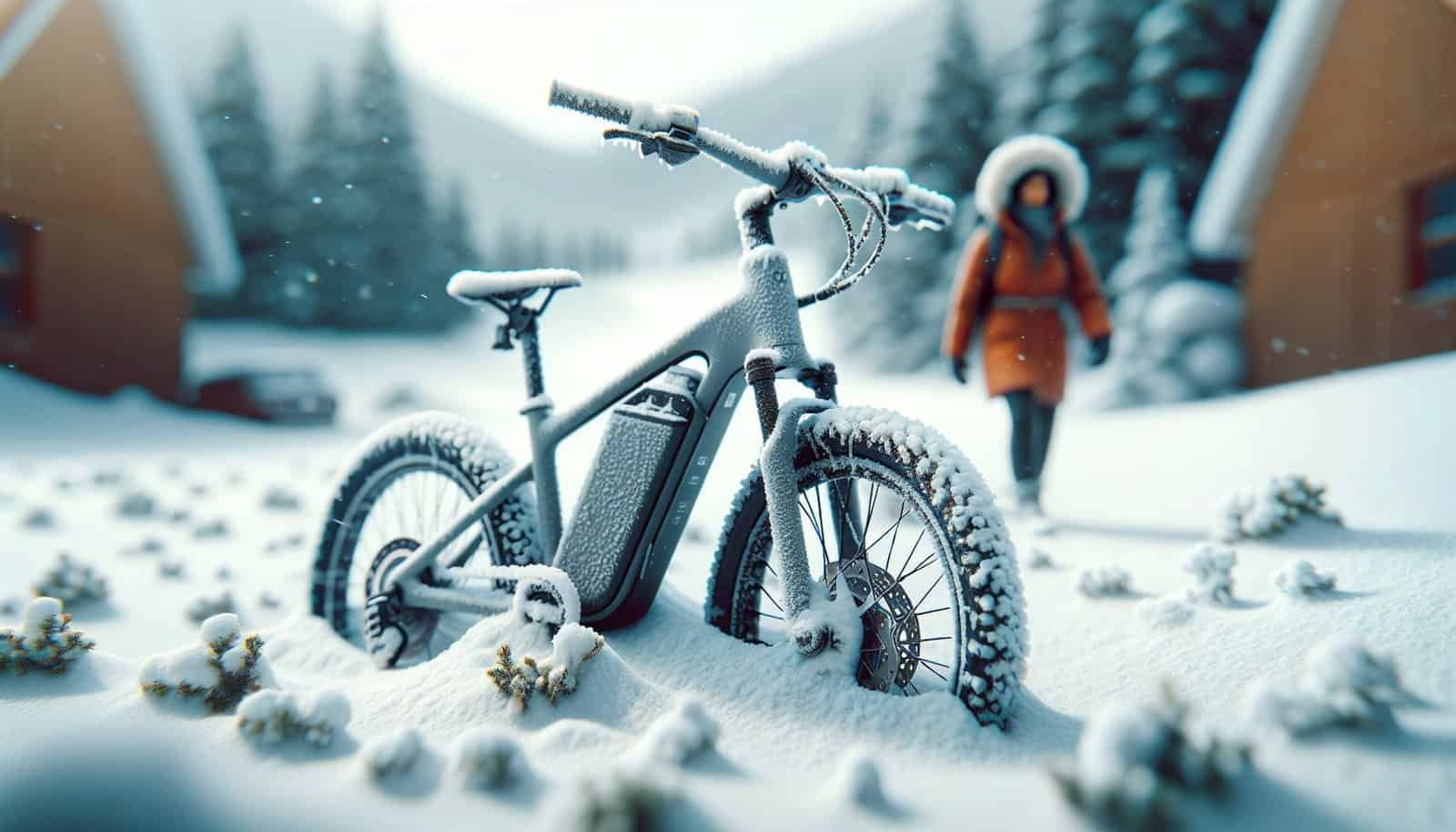Have you ever wondered how electric bikes hold up in varying weather conditions, especially when the elements take a wintry turn? From navigating through snow-covered streets to enduring chilly temperatures, electric bikes face unique challenges compared to traditional bicycles or motorized vehicles. In this article, we will explore the performance of electric bikes in different weather conditions, with a specific focus on snowy environments. Whether you’re an e-bike enthusiast or simply curious about their capabilities, join us as we uncover the fascinating world of electric bikes and their resilience in the face of snowy weather.

Overview of Electric Bikes in Different Weather Conditions
Electric bikes, also known as e-bikes, have gained significant popularity in recent years due to their convenience, sustainability, and ease of use. These two-wheeled vehicles are equipped with a motor and a battery that provide additional power to the rider, making cycling effortless and enjoyable. However, one aspect that often raises concerns among potential e-bike riders is their performance in different weather conditions, particularly in snow.
Understanding Electric Bikes
Before delving into how electric bikes perform in snow, it is essential to understand what sets them apart from traditional bicycles. Electric bikes are equipped with a motor that assists the rider’s pedaling power, enabling them to cover larger distances and tackle hilly terrains with ease. The motor is powered by a rechargeable battery, which needs to be charged regularly.
Advantages and Disadvantages of Electric Bikes
Electric bikes offer numerous advantages over traditional bicycles. They provide an alternative mode of transportation that is eco-friendly, cost-effective, and promotes physical activity. E-bikes are particularly beneficial for those who may not have the physical fitness or stamina to travel long distances on a conventional bike. However, electric bikes also present certain disadvantages, such as their higher initial cost, dependency on battery power, and limited range.
Importance of Weather Conditions on Electric Bike Performance
Weather conditions play a crucial role in the performance of electric bikes. While e-bikes are designed to withstand various weather conditions, certain factors, such as rain, wind, and snow, can impact their overall performance. Snow, in particular, poses a unique set of challenges for electric bike riders, including reduced traction, decreased battery performance, and potential instability.
Effects of Snow on Electric Bike Performance
Challenges of Riding Electric Bikes in Snow
When it comes to riding electric bikes in snow, several challenges arise. The most apparent challenge is the reduced traction between the tires and the snowy surface. Snowy conditions make it harder for the tires to grip the road, leading to decreased stability and maneuverability. Additionally, snow can accumulate on certain bike components, such as the brakes, causing them to become less effective.
Impact on Traction and Stability
Snowy conditions significantly affect the traction and stability of electric bikes. The reduced traction makes it more difficult for the bike to grip the road, especially when navigating turns or riding on steep inclines. As a result, riders may experience instances of slipping or sliding, which can be potentially dangerous. Maintaining balance and control becomes imperative, requiring riders to adapt their riding techniques accordingly.
Reduced Battery Performance in Cold Weather
Another significant effect of snow on electric bike performance is the impact on battery performance. Cold weather tends to drain the battery faster, resulting in reduced overall range. Additionally, extreme cold temperatures can cause the battery to lose capacity temporarily, further limiting its performance. It is crucial for riders to be mindful of their battery level and plan their rides accordingly, especially in snowy conditions.
Preparation for Riding an Electric Bike in Snow
Choosing the Right Electric Bike for Snowy Conditions
Selecting the appropriate electric bike for snowy conditions is essential for a safer and more enjoyable riding experience. When considering an electric bike for snowy terrains, it is advisable to prioritize certain features. Look for models with wider tires, as they provide better traction and stability on snow-covered surfaces. Additionally, e-bikes with a sturdy frame and powerful motor will offer better performance in challenging conditions.
Ensuring Proper Maintenance and Tire Selection
Before venturing out in snowy conditions, it is crucial to ensure that your electric bike is well-maintained and prepared for the challenge. Regular maintenance, including checking the brakes, gears, and tire pressure, is important to enhance the bike’s overall performance. Consider investing in tires specifically designed for snowy conditions, as they offer better grip and traction.
Pre-ride Checklists and Safety Equipment
Prior to riding an electric bike in the snow, it is essential to go through a pre-ride checklist to ensure all safety measures are in place. Check that your lights and reflectors are working correctly, as visibility is of utmost importance in snowy conditions. Wearing appropriate winter clothing, including warm gloves, boots, and a waterproof jacket, will help keep you comfortable during your ride. Additionally, don’t forget to wear a helmet and consider using reflective gear to enhance your visibility to other road users.
Handling an Electric Bike in Snowy Conditions
Adapting Riding Techniques for Snow
Riding an electric bike in snow requires certain adjustments in riding techniques to ensure safety and control. First and foremost, it is essential to reduce your speed and ride at a slower pace to accommodate the reduced traction. Give yourself ample time to brake and turn, as sudden or sharp movements can lead to loss of control. Additionally, keep a wider distance between yourself and other vehicles on the road to allow for any potential sliding or skidding.
Braking and Turning in Snow
Braking and turning on an electric bike in snowy conditions require extra caution and precision. Applying sudden or excessive force on the brakes can cause the wheels to lock and lead to skidding. Instead, gently apply the brakes and start slowing down earlier than you would in dry conditions. When turning, it is vital to maintain a smooth and gradual motion, avoiding any sharp movements that could disrupt the balance of the bike.
Maintaining Balance and Control
One of the key challenges of riding an electric bike in the snow is maintaining balance and control. The reduced traction and potential instability require riders to be more mindful of their body position and weight distribution. Keeping your body upright and centered over the bike’s frame will help maintain stability. Additionally, be conscious of your grip on the handlebars and ensure a firm hold when riding in snowy conditions.

Tips for Enhancing Electric Bike Performance in the Snow
Using Snow Tires or Chains
To enhance the performance of an electric bike in the snow, consider using snow tires or chains. Snow tires have a specific tread pattern that offers better grip on snow and ice, increasing traction and stability. Chains, on the other hand, provide additional traction by biting into the snow or ice when riding. Both options significantly improve the bike’s overall performance in snowy conditions.
Modifying Electric Bike Components for Cold and Wet Conditions
Modifying certain components of your electric bike can also help enhance its performance in cold and wet conditions. Waterproofing certain electrical connections and covering them with protective sleeves or coatings can prevent water damage. Additionally, applying lubrication to moving parts, such as the chain and gears, will help reduce friction and prevent freezing in cold temperatures.
Applying Protective Coatings to Prevent Corrosion
Salt and other chemicals used to melt snow on roads can cause corrosion on various bike components. Applying protective coatings, such as silicone sprays or specific bike frame protectants, can help prevent corrosion and prolong the lifespan of your electric bike. Regularly cleaning and drying your e-bike after riding in the snow will also help remove any residual snow or chemicals that may contribute to corrosion.
Cleaning and Maintenance of Electric Bikes After Snowy Rides
Removing Snow and Ice from the Electric Bike
After riding an electric bike in snowy conditions, it is crucial to remove any accumulated snow or ice from its components. Use a soft brush or cloth to gently remove the snow, taking care not to damage any delicate parts. Pay close attention to the brakes, gears, and chain, as these components are more prone to collecting snow and ice. Avoid using hot water to melt the snow, as it can damage electrical parts.
Drying and Lubricating Components
Once snow and ice have been removed, thoroughly dry your electric bike to prevent water damage. Use a clean and absorbent cloth to wipe down all surfaces, paying extra attention to any components that may have gotten wet. Additionally, apply lubrication to the chain and other moving parts to ensure smooth operation and prevent rusting.
Inspecting for any Potential Damage
After cleaning and drying your electric bike, it is recommended to inspect it for any potential damage caused by riding in the snow. Check for any signs of corrosion, such as rusted components or discolored areas. Ensure that all electrical connections are secure and free from water or moisture. If you notice any significant damage or issues, it is advisable to consult a professional bike mechanic for further inspection and repair.

Comparing Different Electric Bike Models for Snow Performance
Reviewing Electric Bike Features Suitable for Snow
When comparing different electric bike models for snow performance, certain features should be taken into consideration. Look for models with wider tires that are specifically designed for riding in snowy or icy conditions. A powerful motor with sufficient torque will provide better assistance when faced with inclines or challenging terrain. Additionally, opt for bikes with durable frames and components that can withstand the harsh conditions of winter riding.
Popular Electric Bike Models for Winter Riding
Several electric bike models have gained recognition for their reliable performance in snowy conditions. Some notable options include the Rad Power Bikes RadRover, the Trek Powerfly, and the Haibike SDURO FullNine 3.0. These models offer a combination of features suitable for winter riding, such as wider tires, strong motors, and sturdy frames. However, it is essential to evaluate your specific needs and preferences when selecting an electric bike for snowy conditions.
User Experiences and Recommendations
Reading reviews and gathering insights from other electric bike riders can provide valuable information when choosing a model for snowy conditions. Online forums, social media groups, and e-bike communities are excellent resources for connecting with experienced riders and seeking recommendations. Hearing firsthand experiences can help you make an informed decision and find an electric bike that meets your requirements for winter riding.
Safety Considerations for Riding Electric Bikes in Snow
Importance of Visibility in Snowy Conditions
One of the most critical safety considerations when riding an electric bike in the snow is visibility. Snowy conditions often result in reduced visibility for both the rider and other road users. It is crucial to equip your electric bike with proper lighting, including front and rear lights, as well as reflective accessories. High-visibility clothing or reflective vests can also significantly enhance your visibility to others on the road.
Wearing Proper Winter Clothing and Protective Gear
Riding an electric bike in snowy conditions necessitates wearing appropriate winter clothing and protective gear. Opt for insulated and waterproof clothing that will keep you warm and dry throughout your ride. Wear insulated gloves or mittens to protect your hands from cold temperatures. Don’t forget to wear a helmet to ensure your safety and consider using additional protective gear, such as knee pads or elbow pads, depending on your riding style and preferences.
Riding Responsibly and Assessing Road Conditions
Riding responsibly is crucial when it comes to riding an electric bike in the snow. Always obey traffic rules and regulations, and be mindful of other road users. Assess road conditions before embarking on your ride and adjust your speed and riding techniques accordingly. Be cautious of potentially slippery areas, such as intersections or shaded sections of the road, and avoid abrupt movements that can compromise your balance and control.

Common Myths and Misconceptions about Electric Bikes in Snow
Electric Bikes Cannot Function in Snow
Contrary to popular belief, electric bikes can indeed function in snowy conditions. While snow presents unique challenges and may require some adjustments in riding techniques and equipment, electric bikes are designed to handle various weather conditions, including snow. With the appropriate modifications, preparations, and riding techniques, electric bikes can safely and effectively navigate snowy terrains.
Electric Bikes Are Dangerous in Slippery Conditions
While it is true that riding an electric bike in slippery conditions, such as in snow, poses certain risks, it doesn’t necessarily mean they are inherently dangerous. With proper precautions, such as adjusting your riding techniques, equipping the bike with suitable tires, and wearing appropriate protective gear, the risks associated with riding in slippery conditions can be significantly minimized. Riding responsibly and staying vigilant will help ensure a safe and enjoyable experience.
Electric Bikes Are Not Equipped for Winter Riding
Another misconception is that electric bikes are not equipped for winter riding. While it is true that not all electric bikes are specifically designed for winter riding, there are numerous models available that offer features suitable for snowy conditions. These models often have wider tires, weatherproofing measures, and powerful motors that can tackle the challenges of winter riding. The key is to choose the right electric bike that is suited for the specific weather conditions you will be riding in.
Conclusion
Electric bikes can provide a convenient and eco-friendly mode of transportation in various weather conditions, including snow. While riding an electric bike in snowy conditions does present unique challenges, with proper preparations, adaptations, and equipment, it is possible to have a safe and enjoyable winter riding experience. By selecting the right electric bike, adhering to safety considerations, and staying informed about maintenance and modifications, you can confidently traverse snowy terrains with your electric bike. As technology continues to advance, electric bikes are expected to become even more capable of handling different weather conditions, further fueling their popularity as a sustainable means of transportation.


